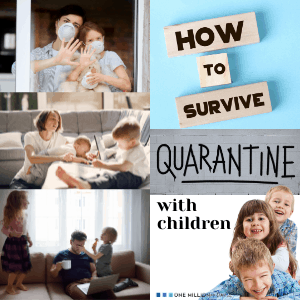AFFILIATE DISCLOSURE This website may contain affiliate links. If you click on one of my affiliate links and make a purchase, I may receive a commission for referring you. This comes at no additional cost to you. Please know that I only recommend resources I like and highly recommend.

Easier said than done…right? As the days pile on and the laundry piles up, it is easy to get frustrated with this new norm. You are not alone! The most important thing to remember is to have fun with your children! You can survive Quarantine with children. A lot of learning can happen while keeping the agenda fun and age-appropriate. There are a lot of benefits to tackling the curriculum with this in mind. A young child sitting at a desk for too long will quickly resent learning in that fashion. This will ultimately make your educational journey more difficult.
Your teachers and educators will do their best to catch them up in the educational learning aspects when school returns. What you need to do is to continue raising loving good-hearted children that love to learn through hands-on curiosity. Please take a second and recognize that what is being asked of you at the moment is a lot. Most of you are working full-time jobs at home, You are caring for your children and educating them on a full-time basis. You are also taking care of the house, preparing meals, caring for older relatives, and more. With all that entails this is basically 3 or more full-time jobs in one.
If you are feeling overwhelmed, I’m not surprised! Please know that this is to be expected and you are not alone. Drop your shoulders, breathe for a second, and realize that you are accomplishing a lot! The love and care that you have for your children and family is the biggest gift you can give them! That is what they will remember through this all!! With a few tips and tricks you can survive Quarantine with children.
In the meantime, here are a few fun age-appropriate activities for your children that may help you during this time! They are all easy to incorporate activities and will keep your little learners interested and occupied. They are also adaptable to your child’s abilities.
Morning Coloring Activity
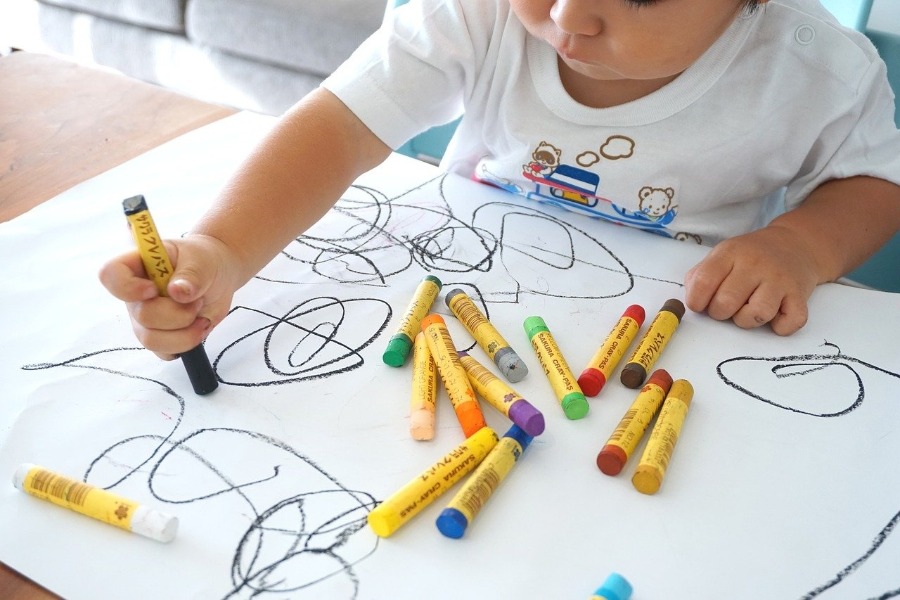
Have a coloring page or activity ready for them when they wake up. They will learn a routine and know to do this activity while you are getting their breakfast ready. It will help to start their day in a calming creative state of mind. You can also create coloring pages based on your child’s interest. There are a ton of images that you can print out also. Pick an image…let’s say trucks. Google “trucks line art” and look under images, pick one and print it out. (You may need to drop the image into a word document to enlarge) I would recommend printing several at a time and have a stack of them prepared and hidden away.
Choose one a day and put it out at their spot at the table with crayons or markers. Quick trick…put it all on a baking sheet or tray, that way they can move it to the side quickly when breakfast is ready. Your day will start off with a relaxing expression of their creativity.
Estimation Station
Have a clear plastic bin (like the one pretzels come in) and put random objects inside. Your children will need to estimate or guess how many objects are in the jar. For younger children, have them pull the items out and line them up so you can count them together. Older children can count the items by themselves and compare the final count to their estimation. You can make a daily chart to see who is the closest. There are many different math activities that can be incorporated with this activity. Switch it up with different items every day. They can only get another one tomorrow if they put away today’s items to their proper homes.
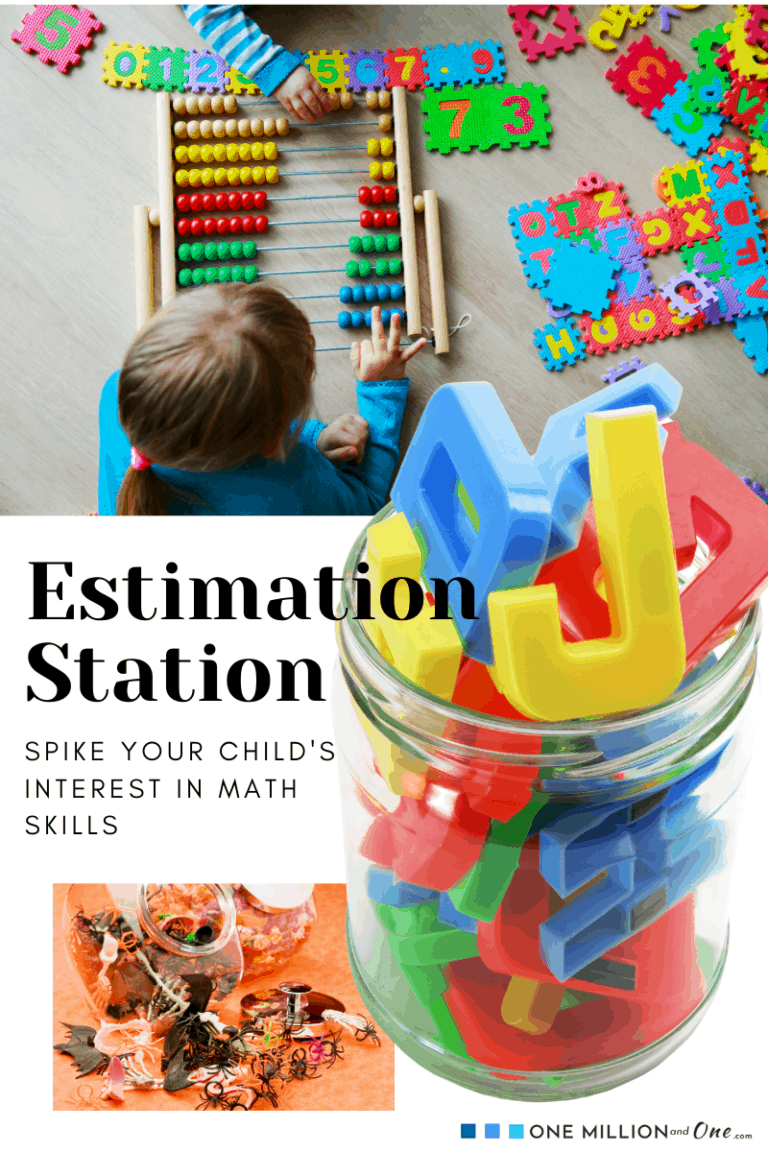

A Stopwatch will be your best friend.
Children have a naturally competitive and repetitive nature. Use your stopwatch to see how long it takes for them to run a circle or a lap around the perimeter of your backyard and then have them do it again. See if it took longer or took less time the second time around. This is a great way to get the children running and active. Older children can make charts and make it a competition. Also, try mixing it up…how long does it take to put a toy away, how long to run to that tree, how many jumping jacks can you do in a minute? Older children like to take control of the timer also, just don’t use this for larger projects like cleaning their room…it loses their interest then. This is a great activity for large motor skills that incorporates math activities.
Hide and Seek Activity Games
Everyone has played “Hide and Seek” before and it’s always a classic and a great go-to game with children. Here’s a twist on the old classic; instead of people use items. Take all of your child’s Paw Patrol items and figurines and hide them around the house for them to find, or take all the pieces to a board game and they have to bring the pieces back until it is complete. Older children can look for puzzle pieces and have to put the puzzle together to know if they found all of the pieces. Once they are done they can become the hiders, and hide the pieces for you or other family members to find.
Easter eggs work great for this activity and inside the eggs can be fun instructions…do a wiggly dance, jump 4 times etc.., or they can have the letters that spell their names or the alphabet. You can use numbers 1-10 and they can put them in order. The ideas are endless.

Hunt for Clues Game
This one will take a little more preparation and thought process. It works best for the children that are reading, otherwise, you will need to read the clues for your child. Take index cards or small pieces of paper and write clues to help the child find the next clue hidden in your house or back yard. Extra Kudos if you can make it rhyme. Each clue should lead to the next clue and at the end you could have a surprise gift or treat but this is not necessary.
For example…Hide the clue by the house keys with a clue leading up to them that says. Your next clue is not hiding far, but without me, you can’t open the house door or start the car.
Another clue could be in the Fridge…Here’s another hint that must be told…look where our food stays nice and cold.
For younger children you can even take pictures of areas around your house with your phone, print out the images and have your child find those areas. Close up pictures are always a challenge and can be a fun perspective for a young child. This activity encourages their problem solving skills.
Scavenger Hunt Games

Almost any topic can become a scavenger hunt game … a color scavenger hunt where they need to find something of each color, an alphabet scavenger hunt where they need to find an item that begins with each letter (letters like X may need to have the letter in the word ie…box) a nature scavenger hunt where you list items that you will see on your next walk…an acorn, pine tree, a squirrel. There are a lot of variations, and the internet is full of printouts that you can use as well, although it can be fun to make your own or create a list as you go, based on items that you see. This is a great way to keep their mind challenged.
Freeze Dance
Many of us played this game when we were little…you play music and the children will need to dance while the music is playing and then stop the music and the children will freeze like a statue. Older children can-do a run-in place activity or they can do push-ups when the music stops, or while it’s playing and rest when it stops. Their are endless variations to a basic game. Even Alexa can play it for you (although be prepared, her version can get annoying after a while). This is a great way to incorporate the cognitive thinking skills, while stretching and excercising.
Matching Games
Any pictures or themes can become a matching game. Find pictures that are theme-related, such as insects, animals, princesses, construction trucks, family photos etc… print them out at the same size and print two copies of each item. I usually google photos or take my own and place them in a Microsoft word document and print it out twice. Instant matching games. Turn them over for a new memory game.
You can also do this with items around the house, both indoors and outdoor. If you find a red leaf, then they need to find a red leaf. If you find a princess doll then they need to find a princess doll. (Hint: this can be a great way for them to find and put on their shoes or help put items away)
Make Your Own Board Game
Have the children create their own board game. You can use a game board that is no longer played and cover with white paper or paint. You can also use a cardboard box and let the children create it themselves. (Save one of those Amazon boxes before you throw it out) They can create every aspect of the game. Different color squares can become the game spaces (paint sample cards work great for this) They can make their own game pieces or use figurines they already have. They can make game cards with instructions of what to do if you land on that card, (younger children can draw pictures of what you need to do if you get that card) Young children get so excited to play a game that they created, however, be prepared, they also think they can change the rules also…very cute!
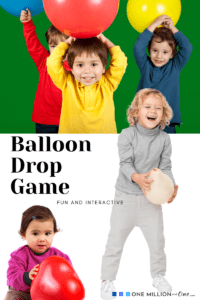
A Balloon Drop
Something as simple as not letting a balloon drop and hit the floor, can be an exciting and very interactive game. This is a fun and addictive game, however, please be careful with younger children as balloons are very choke-able! Always use supervision. For a family game have each family member sit in one spot and bounce a balloon between everyone. It helps to use pillows for younger ones to remember to sit down during the game. The idea is not to let the balloon drop on the floor. It is a lot of fun and children love doing this simple activity. It sounds so basic, and it is, but trust me, there will be a lot of smiles and laughter and you will have a lot of fun!
Include the Children in your Chores.
Okay don’t roll your eyes…this is possible, trust me. Now is a great time to learn responsibilities. Children as young as two know to put their trash away after every meal at pre-school and have learned to wipe up their mess/crumbs or spills. Let them do this at home also. Encourage children to learn this while they are young enough to still have fun with it. If you wait until they are old enough and able to complete the task properly you will run up against resistance.
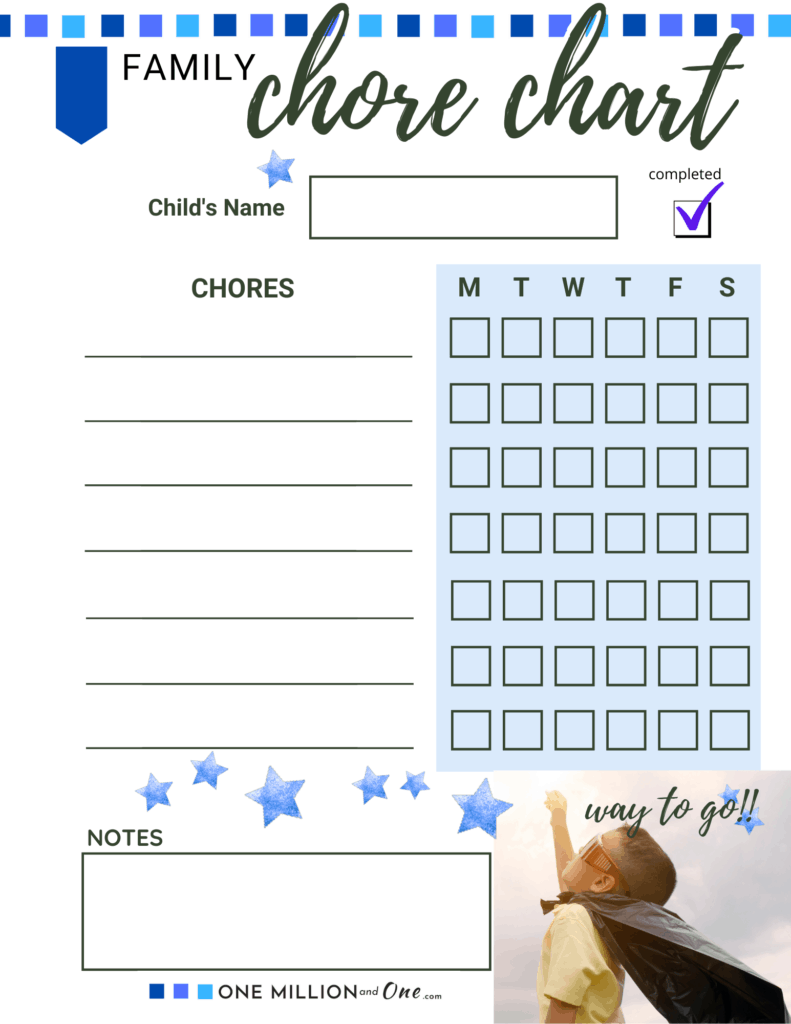
Give a young child a small handheld sweeper set, they will have fun walking around finding items to sweep up and throw away. You can even let them decorate their own set. Give them a dust cloth, and have them dust with you. A small handheld vacuum is great fun for little ones. Provide a sponge, or a wipe to wipe down your kitchen table after meals. In the bathrooms have them wipe down with a baby wipe every time after they brush their teeth, you can go in later and wipe down with disinfectant wipes, (which are too harsh for a child to use) Trust me this will make your job easier also.
Have your child help you set the table, clear the table, load or unload the dishwasher (be careful of utensils, that’s an adult or older sibling job) Children can help with the laundry, give them the job of matching socks. It keeps them busy and thinking while you fold the rest. You will be surprised at how well they can do it.
Your children may not be great at cleaning or chores at first, but it is a learning process and it is something that you will be glad that you instilled while they were young. It also does a lot for their self-esteem since they feel proud for helping you. What a great way to teach young children about responsibilities and caring for their home and their belongings.
Help in the Garden

Children love gardening! Playing in the dirt is always fun. It is best to designate “their area” because they can be rough with the plants as they are learning. Don’t have any seeds?… no worry. Take tomato seeds from your next salad and have them cultivate them in paper egg cartons. They can care for them daily and plant them once they sprout. Children like to make garden markers by painting craft sticks or even rocks to put in the garden. You can take a neighborhood walk to find the perfect rocks and then the children can clean them and paint them. (Don’t be surprised if they want to make pet rocks) They like to paint and create plant containers also.
Teach your child about pulling weeds, this is great fun! If you have a wheel barrow or a bucket, they can fill it with weeds. Teach them the difference between plants and weeds.
Have your child create a journal, by drawing pictures of their growth. Younger children can help you take pictures to send to Grandmom. Even better have them plant and care for a flower and then have them give it as a gift. What an incredible lesson in gift giving and caring for others, and of course the pride of accomplishments without the instant gratification. This will be a lesson in patience and anticipation.
Birdhouses
Children are always impressed by wild birds. If you have a tree close to a viable window, try putting a birdhouse at their level. You will be amazed at how often they will watch the bird’s activities.
There are so many different ways to make a birdhouse also, the internet is full of them. Many local hardware stores and craft stores have craft kits that are fun to put together.
This can also be a great way to see if your child is ready for a family pet. See how interested they are in the birds, how long it keeps their attention, and how active they are in making sure it has food for the birds.
Children love bird watching, older children can draw or take pictures to make a bird-house journal. You can also purchase an illustrated bird book so they can look and try to identify the birds that come to visit their house. Naming the birds was always popular at our house also, although I do not think they were ever the same bird.
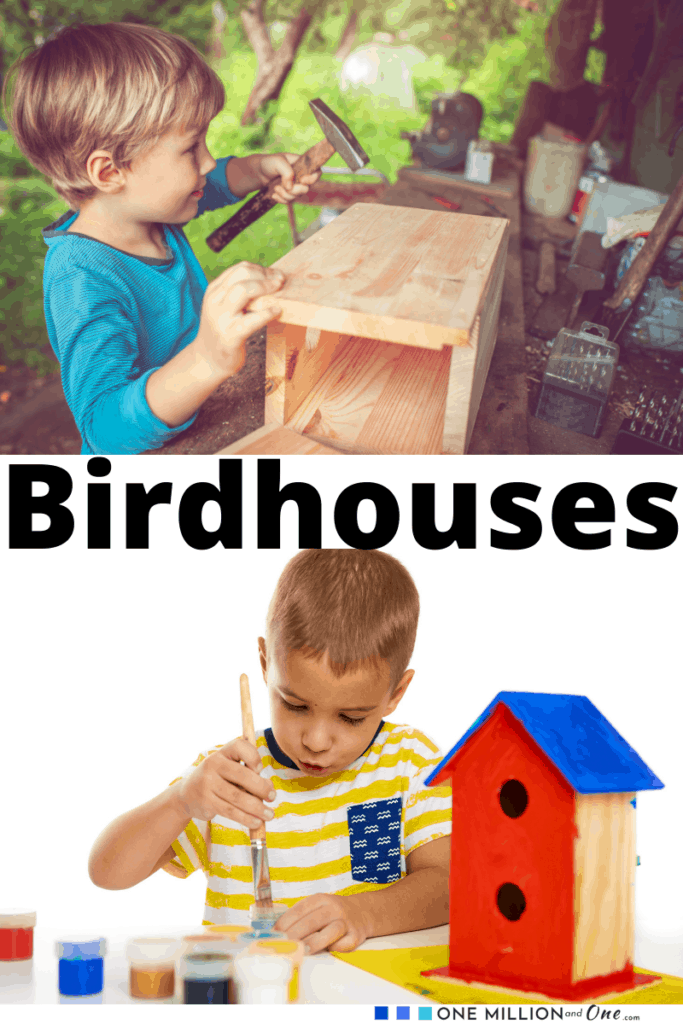
Children Love to Cook
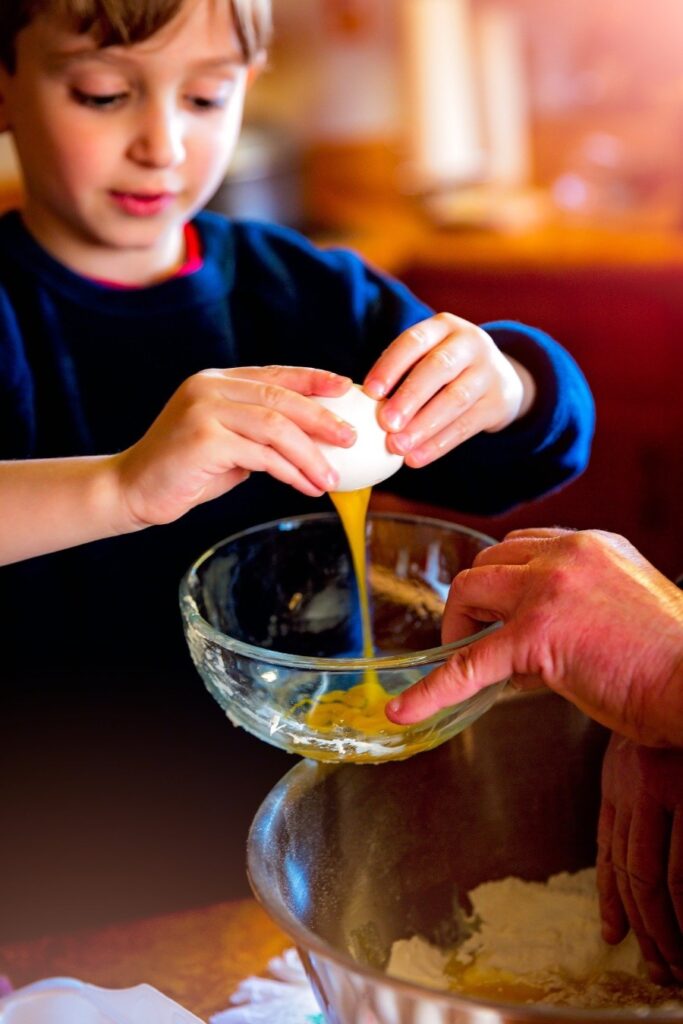
Some items are more rewarding for children to cook in the kitchen than others. Helping with dinner can be too restrictive at first. Let them help make pudding or jello for dessert while you are making dinner. They can help make cookies or bread. Pizza crust is also a big hit.
Applesauce is always a hit at school during our Fall themes and it makes the whole house smell good. Bonus tip…use a crock pot and let it cook all day. Also, items like mashed potatoes where they can have fun mashing and mixing are always a great idea. Let your child experiment or copy what you are doing. It may make a mess but they can help clean up also.
Your child’s creativity and sense of achievement will blossom if you let them have some control. Let a child crack an egg into a bowl if they get shells then let them dig them out. It is a fun sensory and science experiment in the making. (Always make sure to wash hands thoroughly) There is so much to teach your child from just an egg. It has a cold hard shell, that is easily breakable and has a gelatinous inside texture. Where do eggs come from? So much to learn and if you wasted one egg, what did it cost you?…about 20 cents. If you are making cookies or pizza crust, let them measure, mix, and create their own instead of just having you help them. Hands-on learning is a great way to learn. Pride of ownership is my favorite term when teaching children.
Tape Shape Game
If you have adaptable floors (usually not carpet) you can use painters tape and make shapes on the floor. Have them jump and identify the shapes. You can set them up like a football field where there are distance line tapes (10 20 30 etc…) and they can throw a bean bag into a bucket placed on each line and keep track of their scores. You can make a hopscotch board with the tapes or create a fun obstacle course. (use the timer here also). There are so many fun and creative things that can be done with this idea. It’s a great rainy day activity also.
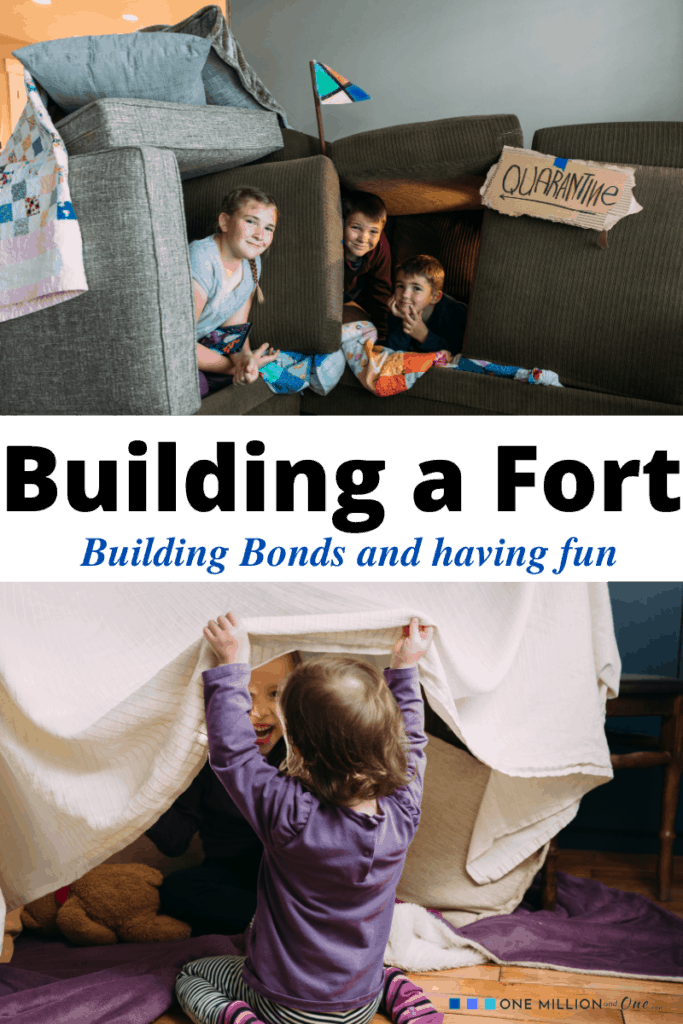
Build a Fort
You will be amazed by how much fun children have creating forts, especially indoor forts. Two sturdy chairs and a bedsheet is all that is needed to create the fort. Children can bring their nap mats or blankets and pillows to make it comfy. This can become a reading nook also and be a great way to encourage their reading skills. Make a fort outdoors with chairs or a picnic table. We had a lot of fun creating forts at the local pool in the summertime by taking two beach chairs and connecting it with a large beach towel, it was a great break from the sun also. A fitted sheet can work well also, since it has the corners already set. Children will remember this for years to come.
Learn about the Mail.
While you are home during Quarantine, children of all ages can learn about the mail and their mailman. Have the children write letters or draw pictures to send to relatives (Grandparents love this). Ask them to write back. It is always a special treat to receive mail! Contact Senior Citizen homes, anywhere around the world, and ask if anyone could benefit from having a Pen Pal. There are many older citizens that would love to correspond. They can even draw a picture or write a thank you note to the person that delivers your mail.
Have Fun! There are a lot of benefits including literacy, social skills, empathy and pride of accomplishment.
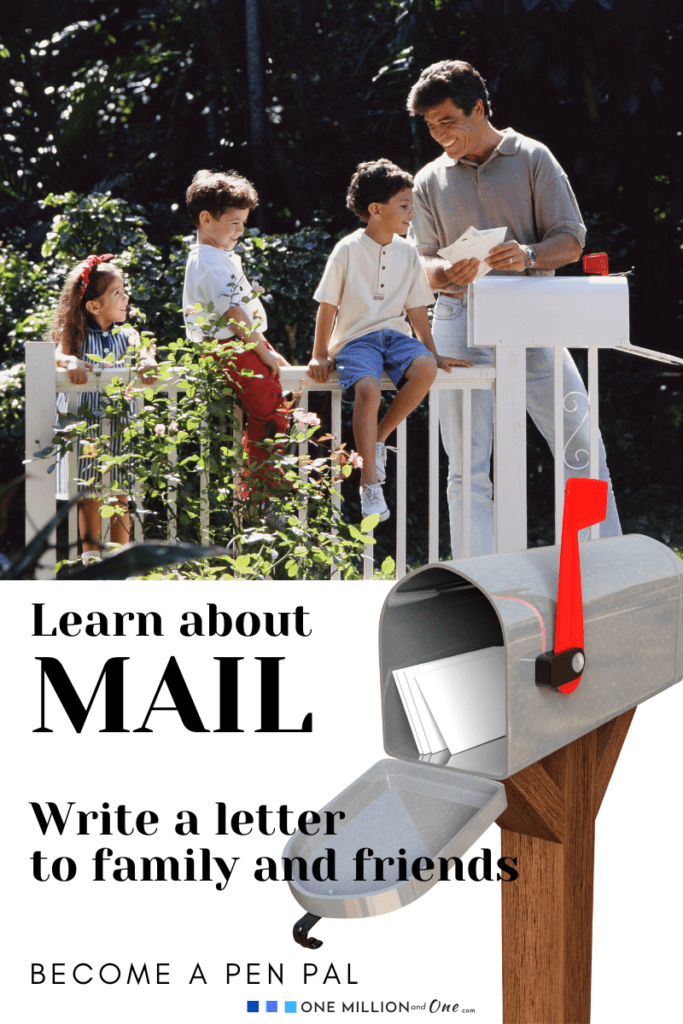
There are so many ways to have fun during Quarantine. Learning can be incorporated in fun and age appropriate ways. You will be surprised at how much learning can be done while playing and utilizing age appropriate activities. It’s like slipping in the vegetables with the mashed potatoes. They are getting the benefits without even realizing. That’s a win win for everyone! You can have fun while you survive Quarantine with children.
Want to Share?

